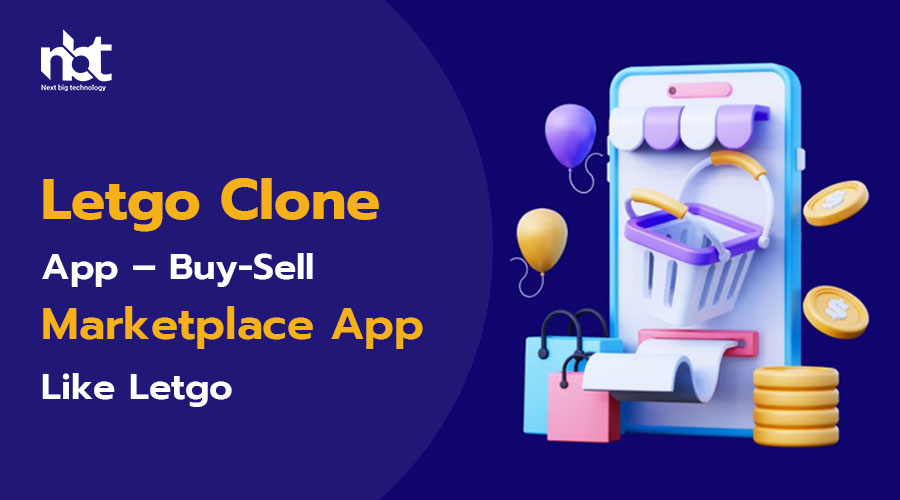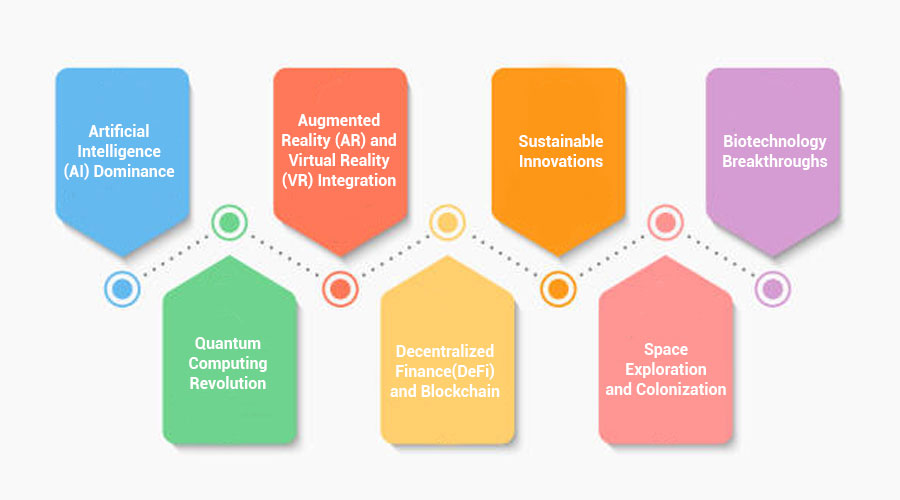Table of Contents
Introduction to Letgo Clone App
In today’s digital era, where convenience reigns supreme, the world of online marketplaces has witnessed a remarkable evolution. With the surge in demand for second-hand goods and the desire for hassle-free transactions, platforms like Letgo have emerged as game-changers in the realm of buying and selling.
Understanding Letgo: Letgo, a pioneering online marketplace, has revolutionized the way individuals buy and sell used items. Founded on the principle of simplicity and user-friendliness, Letgo provides a platform where users can effortlessly list their items for sale and connect with potential buyers in their vicinity.
The Rise of Letgo Clone Apps: In the wake of Letgo’s unprecedented success, the concept of Letgo clone apps has gained significant traction in the market. These clone apps replicate the core functionalities of Letgo while offering customization options to cater to specific business requirements.
Key Features of Letgo Clone Apps:
- User-Friendly Interface: Letgo clone apps prioritize simplicity, ensuring seamless navigation for both buyers and sellers.
- Advanced Search Filters: Users can refine their search based on categories, location, price range, and other relevant criteria, facilitating efficient browsing.
- Instant Messaging: Built-in messaging features enable real-time communication between buyers and sellers, fostering trust and transparency.
- Secure Transactions: Letgo clone apps prioritize security, implementing robust payment gateways and verification processes to safeguard user transactions.
- Geolocation Integration: Leveraging GPS technology, these apps provide location-based services, allowing users to discover nearby listings effortlessly.
Benefits of Letgo Clone Apps:
- Cost-Effectiveness: Developing a Letgo clone app is a cost-effective solution compared to building a platform from scratch, making it an attractive option for entrepreneurs.
- Time Efficiency: With ready-made frameworks and customizable templates, launching a Letgo clone app significantly reduces time-to-market, enabling rapid deployment.
- Scalability: Letgo clone apps offer scalability, allowing businesses to adapt and expand their offerings as per evolving market trends and user demands.
- Brand Customization: Entrepreneurs have the flexibility to personalize their Letgo clone app with unique branding elements, establishing a distinct identity in the market.
- Monetization Opportunities: From featured listings and premium memberships to in-app advertisements, Letgo clone apps offer diverse monetization avenues for sustainable revenue generation.
Understanding the Buy-Sell Marketplace Model
In today’s digital age, the buy-sell marketplace model has emerged as a cornerstone of e-commerce, revolutionizing the way goods and services are bought and sold online. Understanding this model is crucial for both entrepreneurs looking to launch their own marketplace platforms and consumers seeking convenient avenues for purchasing products. In this comprehensive guide, we delve into the intricacies of the buy-sell marketplace model, shedding light on its key components, benefits, challenges, and future prospects.
What is the Buy-Sell Marketplace Model?
At its core, the buy-sell marketplace model is a platform where third-party sellers can list their products or services for sale, while customers can browse, compare, and purchase items directly from these sellers. These marketplaces serve as intermediaries, facilitating transactions and providing a conducive environment for commerce to flourish. Examples of popular buy-sell marketplace platforms include Amazon, eBay, Etsy, and Airbnb, among others.
Key Components of the Buy-Sell Marketplace Model:
- Seller Accounts: Sellers register on the marketplace platform, create listings for their products or services, and manage their inventory, pricing, and promotions through dedicated seller accounts.
- Product Listings: Sellers upload detailed descriptions, images, and pricing information for their offerings, enabling customers to make informed purchasing decisions.
- Search and Discovery: Robust search functionality and intuitive navigation tools allow customers to explore a vast array of products, filter search results based on preferences, and discover new items of interest.
- Transaction Processing: The marketplace facilitates secure transactions between buyers and sellers, handling payment processing, order fulfillment, and customer support to ensure a seamless purchasing experience.
- Reviews and Ratings: Both buyers and sellers can leave feedback and ratings, fostering transparency and trust within the marketplace ecosystem.
Benefits of the Buy-Sell Marketplace Model:
- Expanded Reach: Sellers gain access to a global customer base, tapping into markets that would otherwise be difficult to reach independently.
- Increased Visibility: Products listed on established marketplace platforms benefit from increased visibility and exposure, helping sellers attract potential buyers more effectively.
- Convenience: Customers enjoy the convenience of browsing and purchasing a diverse range of products from multiple sellers within a single platform, streamlining the shopping experience.
- Trust and Security: Marketplace platforms implement robust security measures and buyer protection policies, instilling confidence in customers and mitigating risks associated with online transactions.
- Scalability: The scalability of the buy-sell marketplace model allows for rapid expansion and growth, accommodating fluctuations in demand and adapting to evolving market dynamics.
Challenges and Considerations:
- Competition: The proliferation of marketplace platforms has intensified competition among sellers, necessitating differentiation strategies to stand out in crowded marketplaces.
- Fee Structure: Marketplace platforms typically charge fees for using their services, including listing fees, transaction fees, and commissions, which can impact sellers’ profit margins.
- Regulatory Compliance: Compliance with local regulations, tax laws, and marketplace policies poses challenges for sellers operating in multiple jurisdictions.
- Customer Acquisition: Acquiring and retaining customers amidst fierce competition requires strategic marketing efforts and investment in customer engagement initiatives.
- Counterfeit and Fraudulent Activities: Marketplace platforms must address concerns related to counterfeit products, fraudulent sellers, and unauthorized transactions to uphold trust and integrity.
Future Outlook:
The buy-sell marketplace model continues to evolve rapidly, driven by advancements in technology, changing consumer behaviors, and market trends. Key developments such as the rise of mobile commerce, the integration of AI-driven personalization, and the emergence of niche marketplace verticals are reshaping the landscape of online commerce. As the market matures, collaboration between marketplace operators, sellers, and regulatory authorities will be essential to address emerging challenges and foster sustainable growth.
Key Features of Letgo Clone App
In today’s fast-paced digital era, the world of online marketplaces is evolving rapidly, providing users with convenient platforms to buy and sell goods effortlessly. Among these platforms, Letgo has emerged as a prominent player, revolutionizing the way people trade second-hand items. Now, with the advent of Letgo clone apps, entrepreneurs can tap into this thriving market with their customized solutions. Let’s delve into the key features that make Letgo clone apps stand out in the realm of online classifieds.
- User-friendly Interface: A Letgo clone app boasts an intuitive and user-friendly interface, ensuring seamless navigation for both buyers and sellers. From browsing listings to posting items for sale, every action is designed to be straightforward and hassle-free.
- Advanced Search and Filter Options: To enhance the browsing experience, Letgo clone apps offer advanced search and filter options. Users can refine their searches based on categories, location, price range, and other criteria, enabling them to find exactly what they’re looking for with ease.
- Secure User Authentication: Security is paramount in online marketplaces, and Letgo clone apps prioritize user authentication to ensure a safe trading environment. Robust authentication mechanisms, such as email verification and social media integration, help build trust among users and mitigate the risk of fraudulent activities.
- Real-time Messaging: Communication is key in any marketplace, and Letgo clone apps facilitate real-time messaging between buyers and sellers. This feature enables swift negotiations, clarifications, and coordination between parties, streamlining the buying and selling process.
- Integrated Payment Gateways: To simplify transactions, Letgo clone apps integrate secure payment gateways, allowing users to make payments directly within the app. Whether it’s through credit/debit cards, digital wallets, or other payment methods, buyers can complete transactions conveniently and securely.
- Comprehensive Listings: Sellers can create comprehensive listings for their items, including detailed descriptions, high-quality images, and relevant tags. This ensures that potential buyers have all the necessary information to make informed purchasing decisions, ultimately increasing the chances of successful transactions.
- Geolocation Services: Leveraging geolocation technology, Letgo clone apps enable users to discover listings based on their proximity. This feature is particularly beneficial for local transactions, as it allows buyers to find nearby sellers and vice versa, facilitating quick exchanges.
- Feedback and Rating System: Building trust and credibility is essential in online marketplaces, and Letgo clone apps incorporate feedback and rating systems to foster transparency and accountability. Users can rate their buying or selling experiences and leave feedback, helping others make informed decisions and fostering a sense of community.
- Customization Options: Entrepreneurs can customize Letgo clone apps to align with their branding and business requirements. Whether it’s tweaking the design elements, adding new features, or integrating third-party services, customization options ensure that the app reflects the unique identity and vision of the business.
- Analytics and Insights: To empower businesses with valuable data-driven insights, Letgo clone apps come equipped with analytics tools. From tracking user behavior to monitoring sales trends, these analytics provide actionable information that can help businesses optimize their strategies and drive growth.
User Registration and Profile Management
In the digital realm, user registration and profile management stand as the cornerstone of personalized experiences and streamlined interactions. Whether it’s accessing an e-commerce platform, engaging with a social media network, or utilizing a professional software application, the process of user registration and profile management sets the stage for seamless navigation and tailored content delivery.
Understanding User Registration
User registration marks the initial point of interaction between individuals and digital platforms. It’s the gateway through which users gain access to the plethora of services and features offered. From a user’s perspective, the registration process should be intuitive, efficient, and secure. Here are some key considerations:
Simplified Registration Forms: Designing concise registration forms is vital to minimize user friction. By requesting only essential information upfront and deferring non-critical details to later stages, platforms can expedite the registration process and enhance user satisfaction.
Social Media Integration: Integrating social media authentication options not only simplifies registration but also accelerates user onboarding. By allowing users to sign up or log in using their existing social media accounts, platforms can eliminate the need for manual data entry, thereby enhancing convenience.
Robust Security Measures: Implementing robust security measures, such as CAPTCHA verification, email verification, and multi-factor authentication, is imperative to safeguard user data and prevent unauthorized access. Prioritizing data encryption and compliance with data protection regulations instills trust and confidence among users.
Optimizing Profile Management
Once users are onboarded, efficient profile management tools empower them to personalize their digital experiences, manage preferences, and maintain control over their accounts. Here’s how platforms can optimize profile management:
Customizable Profiles: Offering customizable profiles enables users to express their individuality and preferences. From uploading profile pictures to selecting theme colors and setting personal preferences, empowering users to tailor their profiles enhances engagement and fosters a sense of ownership.
Granular Privacy Controls: Providing granular privacy controls empowers users to dictate the visibility of their profile information and activity. By enabling users to customize privacy settings for different aspects of their profiles, platforms can cater to diverse privacy preferences and cultivate a culture of transparency and trust.
Seamless Data Synchronization: Ensuring seamless data synchronization across devices and platforms is crucial for maintaining consistency and continuity in user experiences. Whether users switch devices or access the platform through multiple channels, synchronized profile data ensures a seamless transition and eliminates redundancies.
Listing and Product Management
In today’s dynamic digital marketplace, effective listing and product management are essential for businesses striving to stand out amidst fierce competition. With consumers increasingly turning to online platforms for their shopping needs, mastering these aspects can significantly boost visibility, sales, and customer satisfaction. Let’s delve into the intricacies of listing and product management to unveil the strategies that drive success.
Understanding Listing Management
Listing management involves the process of creating, updating, and optimizing product listings across various online channels. Whether it’s an e-commerce website, marketplace, or social media platform, a well-crafted listing can make all the difference. Here’s how to ace it:
- Detailed Product Descriptions: Provide accurate and detailed descriptions of your products, including features, specifications, and benefits. Use language that resonates with your target audience and addresses their pain points.
- High-Quality Visuals: Invest in professional product photography to showcase your offerings in the best light possible. High-resolution images from different angles can instill confidence in potential buyers and enhance the overall shopping experience.
- Keyword Optimization: Conduct thorough keyword research to identify relevant terms and phrases that potential customers are likely to use when searching for products like yours. Incorporate these keywords strategically into your product titles, descriptions, and tags to improve search visibility.
- Consistent Branding: Maintain a consistent brand identity across all your listings to build trust and recognition among consumers. Use consistent fonts, colors, and imagery to reinforce your brand’s message and values.
- Regular Updates: Keep your listings up-to-date with accurate pricing, inventory status, and product availability. Monitor customer feedback and reviews to address any issues promptly and make necessary improvements.
Effective Product Management
Product management goes beyond just listing creation; it involves the entire lifecycle of a product, from ideation to retirement. Here are some key principles to excel in product management:
- Market Research: Conduct thorough market research to identify emerging trends, customer preferences, and competitors’ offerings. Use this insight to develop products that meet market demand and offer a competitive edge.
- Product Development: Collaborate closely with cross-functional teams, including design, engineering, and marketing, to conceptualize and develop new products. Prioritize features based on customer feedback and market demand to deliver value-added solutions.
- Quality Assurance: Implement rigorous quality assurance processes to ensure that your products meet or exceed industry standards. Conduct thorough testing and validation to identify and address any potential issues before launch.
- Lifecycle Management: Continuously evaluate the performance of your products throughout their lifecycle. Monitor sales metrics, customer feedback, and market trends to identify opportunities for product enhancements or retirement.
- Customer Engagement: Foster meaningful connections with your customers through proactive communication and engagement. Solicit feedback, conduct surveys, and leverage social media channels to gather insights and strengthen customer relationships.
Search and Filter Functionality
In today’s digital era, where information overload is a common phenomenon, the ability to quickly search and filter through vast amounts of data has become paramount. Whether it’s browsing through an e-commerce website, navigating a social media platform, or exploring a database, users expect seamless and efficient search and filter functionalities to find exactly what they’re looking for. Let’s delve deeper into why these features are essential for enhancing user experience.
1. Streamlining Navigation: Imagine entering a virtual store with shelves stacked high with products of all shapes and sizes. Without proper organization and labeling, finding a specific item would be like searching for a needle in a haystack. Similarly, on websites or applications, the search bar acts as a compass, guiding users to their desired destination amidst a sea of content. By typing in keywords or phrases, users can instantly narrow down their options, saving time and frustration.
2. Personalization: One size does not fit all, especially in the digital realm. Users have diverse preferences, interests, and requirements. Search and filter functionalities empower users to personalize their experience by refining search results according to specific criteria such as price range, brand, size, color, and more. This level of customization not only enhances user satisfaction but also fosters a sense of control and empowerment.
3. Facilitating Decision-Making: In a world inundated with choices, decision fatigue is a real concern. Search and filter functionalities act as decision-making aids, allowing users to efficiently compare and evaluate options based on their preferences. Whether it’s choosing a hotel based on amenities, selecting a restaurant based on cuisine type, or picking a movie based on genre, these features simplify the decision-making process, leading to more confident and informed choices.
4. Improving Accessibility: For users with disabilities or special needs, navigating digital platforms can pose significant challenges. Search and filter functionalities contribute to improving accessibility by enabling users to find relevant content more easily. Features such as voice search, auto-complete suggestions, and adjustable filters enhance inclusivity, ensuring that everyone can enjoy a seamless browsing experience regardless of their abilities.
5. Enhancing Engagement and Retention: In today’s hypercompetitive landscape, retaining users is just as important as attracting them. By providing robust search and filter functionalities, businesses can enhance user engagement and encourage repeat visits. When users can quickly find what they’re looking for, they’re more likely to stay longer, explore further, and ultimately, become loyal customers or users.
Messaging and Communication Tools
In today’s fast-paced digital era, effective communication lies at the heart of every successful endeavor. Whether you’re managing a remote team, collaborating with colleagues across different time zones, or simply trying to stay connected with friends and family, having the right messaging and communication tools at your disposal can make all the difference. From instant messaging platforms to video conferencing solutions, there’s a plethora of options available to cater to diverse needs and preferences. Let’s delve into the world of messaging and communication tools and explore how they can revolutionize the way we connect and collaborate.
- Slack: Dubbed as the virtual office for teams, Slack has emerged as a game-changer in workplace communication. With its intuitive interface and robust features, Slack facilitates real-time messaging, file sharing, and collaboration, all within organized channels. Whether you’re seeking quick feedback on a project or engaging in casual water cooler conversations, Slack streamlines communication and fosters a sense of camaraderie among team members.
- Microsoft Teams: As part of the Microsoft 365 suite, Teams offers a comprehensive solution for businesses seeking seamless collaboration and communication. Beyond messaging and video conferencing, Teams integrates with other Microsoft applications like Word, Excel, and SharePoint, enabling users to collaborate on documents and projects effortlessly. With features like virtual whiteboards and third-party app integrations, Teams empowers teams to work smarter and more efficiently, irrespective of their physical location.
- Zoom: In an age where remote work is increasingly prevalent, Zoom has emerged as the go-to platform for virtual meetings and conferences. Offering high-quality video and audio capabilities, along with features like screen sharing and recording, Zoom facilitates productive discussions and presentations, irrespective of the distance separating participants. Whether you’re conducting client meetings, team brainstorming sessions, or virtual workshops, Zoom provides a user-friendly platform for seamless communication and collaboration.
- WhatsApp: While primarily known as a personal messaging app, WhatsApp has also gained traction as a communication tool for businesses and organizations. With features like group chats, voice messaging, and file sharing, WhatsApp enables quick and convenient communication among team members, even when they’re on the go. Additionally, WhatsApp Business offers advanced features like automated messages and customer support tools, making it a versatile platform for both internal and external communication.
- Discord: Originally designed for gamers, Discord has evolved into a versatile communication platform used by communities, businesses, and educational institutions alike. With its customizable servers and channels, Discord offers a tailored communication experience, whether you’re coordinating a gaming session or hosting a virtual event. From voice chats to video calls, Discord provides a space for real-time interaction and collaboration, fostering engagement and connectivity among users.
- Google Meet: Integrated within the Google Workspace ecosystem, Google Meet provides a simple yet powerful solution for video conferencing and collaboration. With features like real-time captioning and screen sharing, Google Meet ensures clear and effective communication, whether you’re hosting a team meeting or conducting a client presentation. Seamless integration with other Google applications like Calendar and Drive further enhances productivity and workflow efficiency.
Security and Trust Features
In the digital age, where virtually every aspect of our lives has shifted online, security and trust features have become paramount. From personal data protection to financial transactions, users demand reassurance that their interactions within digital platforms are secure and trustworthy. Let’s delve into the world of security and trust features and understand their significance in today’s interconnected landscape.
Understanding Security Features:
Security features are mechanisms integrated into digital platforms to safeguard users’ data and privacy from unauthorized access, breaches, and cyber threats. These features encompass various elements such as encryption protocols, multi-factor authentication, firewalls, and intrusion detection systems.
- Encryption Protocols: Encryption plays a pivotal role in securing data transmission over networks. Utilizing robust encryption algorithms ensures that sensitive information remains unintelligible to unauthorized parties, thereby preventing data breaches.
- Multi-factor Authentication (MFA): MFA adds an extra layer of security by requiring users to provide multiple forms of identification before accessing their accounts. This commonly includes a combination of passwords, biometric verification, or one-time codes sent to registered devices, reducing the risk of unauthorized access even if one authentication factor is compromised.
- Firewalls: Firewalls act as a barrier between a trusted internal network and untrusted external networks, monitoring and controlling incoming and outgoing network traffic based on predetermined security rules. They help prevent unauthorized access to or from private networks, ensuring data integrity and confidentiality.
- Intrusion Detection Systems (IDS): IDS are proactive security measures that monitor network or system activities for malicious activities or policy violations. They analyze patterns and anomalies to identify potential threats, enabling timely responses to mitigate risks.
Emphasizing Trust Features:
Trust features instill confidence and credibility among users by fostering transparency, reliability, and accountability within digital platforms. These features encompass elements such as secure payment gateways, user reviews and ratings, privacy policies, and trust seals.
- Secure Payment Gateways: Secure payment gateways employ encryption and tokenization techniques to ensure the confidentiality and integrity of financial transactions. They inspire trust by safeguarding users’ payment information and facilitating seamless and secure online purchases.
- User Reviews and Ratings: User-generated reviews and ratings provide valuable insights into the reputation and reliability of products, services, or platforms. They empower users to make informed decisions based on real-life experiences shared by fellow consumers, fostering trust and credibility.
- Privacy Policies: Transparent and comprehensive privacy policies outline how user data is collected, stored, processed, and protected within digital platforms. By adhering to strict privacy regulations and clearly communicating data handling practices, organizations demonstrate their commitment to respecting users’ privacy rights, thereby building trust and loyalty.
- Trust Seals: Trust seals, certifications, or badges from recognized authorities or security providers serve as visual indicators of a platform’s adherence to industry standards and best practices in data security and privacy. Displaying trust seals prominently instills confidence in users and reassures them of the platform’s commitment to safeguarding their information.
Customization and Scalability
In the dynamic realm of modern business, two terms often take the spotlight: customization and scalability. While these concepts might seem distinct at first glance, they are intricately intertwined, serving as pillars upon which successful enterprises are built. Let’s delve into the depths of customization and scalability, unraveling their significance and exploring how they drive innovation and growth.
Customization: Tailoring Experiences for Every Individual
Customization lies at the heart of delivering unparalleled value to customers. In a world where consumer preferences vary widely, offering personalized products or services can set a business apart from its competitors. Whether it’s a bespoke software solution, tailored marketing campaigns, or made-to-order products, customization empowers businesses to cater to the unique needs and desires of their clientele.
One of the key benefits of customization is enhanced customer satisfaction. By allowing consumers to personalize their experiences, businesses foster a deeper sense of connection and loyalty. Moreover, customization facilitates better understanding of customer preferences, enabling companies to anticipate and fulfill their evolving needs with precision.
Scalability: Paving the Way for Growth and Adaptability
Scalability, on the other hand, is essential for ensuring that a business can expand and adapt in response to changing market dynamics. At its core, scalability refers to the ability of a system, process, or organization to handle increased workload efficiently, without compromising performance or quality. Whether a business experiences rapid growth or unforeseen challenges, scalability provides the flexibility and resilience needed to navigate through turbulent waters.
In the digital age, scalability is particularly crucial, given the exponential growth of data and the relentless pace of technological innovation. Businesses must be prepared to scale their operations seamlessly, whether it involves accommodating a surge in website traffic, ramping up production to meet rising demand, or expanding into new markets.
The Synergy Between Customization and Scalability
While customization and scalability may seem like separate concepts, they are closely intertwined, each complementing and reinforcing the other. Customization fuels scalability by driving customer engagement and loyalty, laying the foundation for sustainable growth. Conversely, scalability enhances the feasibility of customization by enabling businesses to deliver personalized experiences at scale, without incurring prohibitive costs or sacrificing efficiency.
In essence, the synergy between customization and scalability empowers businesses to thrive in an ever-evolving landscape, where agility and innovation reign supreme. By embracing both principles, companies can unlock new opportunities, drive revenue growth, and stay ahead of the competition.
Harnessing the Power of Customization and Scalability
So, how can businesses harness the power of customization and scalability to their advantage? The key lies in adopting a holistic approach that encompasses people, processes, and technology. Here are some strategies to consider:
- Invest in Data Analytics: Leverage advanced analytics tools to gain deep insights into customer behavior and preferences, enabling data-driven customization strategies.
- Embrace Flexible Technologies: Choose scalable platforms and solutions that can adapt to changing business requirements, allowing for seamless expansion and customization.
- Empower Employees: Foster a culture of innovation and continuous learning, empowering employees to explore new ideas and adapt to evolving market trends.
- Collaborate Across Departments: Break down silos and encourage collaboration between sales, marketing, R&D, and customer service teams to deliver cohesive and personalized experiences.
- Listen to Feedback: Solicit feedback from customers regularly and use it to refine your products, services, and processes, ensuring ongoing relevance and satisfaction.
Marketing and User Acquisition Strategies
In today’s dynamic digital landscape, where competition is fierce and consumer behavior constantly evolves, mastering marketing and user acquisition strategies is paramount for businesses seeking sustainable growth and success. Effective marketing not only attracts users but also converts them into loyal customers, driving revenue and fostering brand advocacy. Let’s delve into some tried-and-tested strategies to help your business thrive in the competitive market.
Understanding Your Audience: Before diving into marketing tactics, it’s essential to understand your target audience thoroughly. Conduct market research to identify your ideal customers’ demographics, preferences, pain points, and purchasing behavior. Utilize tools like Google Analytics, social media insights, and customer surveys to gather valuable data. By understanding your audience’s needs and motivations, you can tailor your marketing efforts more effectively.
Creating Compelling Content: Content marketing remains a cornerstone of effective user acquisition strategies. Create high-quality, engaging content that resonates with your target audience. Whether it’s blog posts, videos, infographics, or podcasts, focus on providing valuable information, solving problems, and entertaining your audience. Consistent, relevant, and authentic content not only attracts users but also builds trust and credibility for your brand.
Search Engine Optimization (SEO): Optimizing your online presence for search engines is crucial for increasing visibility and driving organic traffic. Conduct keyword research to identify relevant terms and phrases your audience uses when searching for products or services similar to yours. Optimize your website’s on-page elements, including title tags, meta descriptions, and headings. Additionally, focus on creating high-quality backlinks from reputable websites to improve your search engine rankings.
Social Media Marketing: With billions of active users worldwide, social media platforms offer unparalleled opportunities for reaching and engaging your target audience. Develop a robust social media strategy tailored to each platform’s unique characteristics and your audience’s preferences. Regularly share compelling content, interact with your followers, and leverage paid advertising to expand your reach and drive user acquisition.
Email Marketing Campaigns: Email marketing remains one of the most effective channels for nurturing leads and converting prospects into customers. Build an email list of subscribers who have opted in to receive communications from your brand. Segment your audience based on their interests, behaviors, and purchase history to deliver personalized and relevant content. Craft engaging email campaigns that provide value, such as exclusive offers, product updates, and educational content, to drive conversions and customer retention.
Influencer Partnerships: Collaborating with influencers and industry experts can significantly amplify your brand’s reach and credibility. Identify influencers whose audience aligns with your target demographic and values. Develop authentic partnerships where influencers create content that showcases your products or services in a genuine and compelling way. Encourage user-generated content and leverage influencer endorsements to build trust and credibility with potential customers.
Referral Programs: Harness the power of word-of-mouth marketing by implementing referral programs that incentivize existing customers to refer their friends and family. Offer rewards or discounts for both the referrer and the new customer to encourage participation. Ensure that the referral process is seamless and easy to understand, and track the performance of your referral program to optimize its effectiveness over time.
Analyzing and Iterating: Continuous evaluation and optimization are key to maximizing the effectiveness of your marketing and user acquisition strategies. Utilize analytics tools to track key performance indicators (KPIs) such as website traffic, conversion rates, and customer acquisition costs. Analyze the data to identify trends, opportunities, and areas for improvement. Iterate on your strategies based on insights gained from data analysis, testing different approaches to see what resonates best with your audience.
Future Trends and Enhancements
In the ever-evolving landscape of technology and innovation, the only constant is change. As we stride into the future, propelled by the relentless march of progress, it’s crucial to anticipate the trends and enhancements that will shape our world. From cutting-edge advancements in artificial intelligence to sustainable solutions revolutionizing industries, the future promises a tapestry of possibilities. Let’s delve into the key trends and enhancements that are set to redefine tomorrow.
- Artificial Intelligence (AI) Dominance: AI is poised to become the cornerstone of future technological advancements. From predictive analytics to autonomous vehicles, AI-driven solutions are permeating every facet of our lives. As algorithms become more sophisticated and data sets grow exponentially, AI’s potential knows no bounds. The convergence of AI with other emerging technologies like blockchain and Internet of Things (IoT) will unlock unprecedented opportunities, revolutionizing industries and redefining how we interact with technology.
- Augmented Reality (AR) and Virtual Reality (VR) Integration: The lines between the physical and digital worlds are blurring with the widespread adoption of AR and VR technologies. From immersive gaming experiences to enhanced training simulations, AR and VR are transforming entertainment, education, and enterprise. As these technologies mature, we can expect to see them integrated seamlessly into everyday life, revolutionizing communication, collaboration, and consumer experiences.
- Sustainable Innovations: With climate change looming large, sustainability has emerged as a critical imperative for future developments. From renewable energy solutions to circular economy models, sustainability is driving innovation across industries. Advances in green technology, such as solar panels, electric vehicles, and eco-friendly materials, are reshaping our infrastructure and consumption patterns. The future belongs to those who prioritize sustainability, ushering in an era of environmentally-conscious innovations.
- Biotechnology Breakthroughs: The intersection of biology and technology is unlocking new frontiers in healthcare, agriculture, and beyond. Gene editing technologies like CRISPR are revolutionizing medicine, offering potential cures for genetic diseases and personalized treatments. In agriculture, precision breeding and genetic engineering are boosting crop yields and resilience in the face of climate change. As biotechnology continues to advance, we can expect profound implications for human health, food security, and biodiversity conservation.
- Quantum Computing Revolution: Quantum computing holds the promise of solving complex problems at an unprecedented scale. By harnessing the principles of quantum mechanics, quantum computers have the potential to outperform classical computers in areas such as cryptography, drug discovery, and optimization. While still in its infancy, quantum computing is poised to revolutionize industries and drive scientific breakthroughs in the decades to come.
- Decentralized Finance (DeFi) and Blockchain: Blockchain technology is disrupting traditional finance and beyond, enabling decentralized and trustless systems. Decentralized finance (DeFi) platforms are democratizing access to financial services, offering alternatives to traditional banking and investing. Moreover, blockchain’s transparency and immutability make it a powerful tool for supply chain management, identity verification, and voting systems, paving the way for a more transparent and inclusive future.
- Space Exploration and Colonization: Humanity’s quest to explore the cosmos is reaching new heights with ambitious space missions and plans for colonization. From commercial space travel to lunar and Martian exploration, space agencies and private companies are charting a course towards the stars. As space technologies advance, we may witness the dawn of a new era of space colonization, with implications for resource extraction, tourism, and the long-term survival of our species.
Top Letgo Clone App Development Companies
In the realm of online marketplaces, Letgo has carved a niche for itself as a platform where users can buy and sell secondhand items locally. Its user-friendly interface and efficient features have garnered immense popularity among users worldwide. Entrepreneurs keen on capitalizing on this success often seek out Letgo clone app development companies to create similar platforms tailored to their unique vision.
Letgo clone apps offer businesses the opportunity to delve into the thriving market of peer-to-peer selling while leveraging proven functionalities and user experiences. However, with the plethora of app development companies available, selecting the right one can be a daunting task. To assist you in this quest, we’ve curated a list of the top Letgo clone app development companies renowned for their expertise, innovation, and client satisfaction.
-
-
Next Big Technology:

Focus Area
- Mobile App Development
- App Designing (UI/UX)
- Software Development
- Web Development
- AR & VR Development
- Big Data & BI
- Cloud Computing Services
- DevOps
- E-commerce Development
Industries Focus
- Art, Entertainment & Music
- Business Services
- Consumer Products
- Designing
- Education
- Financial & Payments
- Gaming
- Government
- Healthcare & Medical
- Hospitality
- Information Technology
- Legal & Compliance
- Manufacturing
- Media
-
- Codiant: Codiant specializes in crafting bespoke mobile applications tailored to meet the unique requirements of businesses. Their Letgo clone app development services focus on scalability, security, and user engagement, empowering entrepreneurs to launch feature-rich platforms capable of rivaling the success of the original Letgo app.
- Zoplay: Zoplay boasts extensive experience in developing clone scripts for popular online marketplaces, including Letgo. Their comprehensive Letgo clone solution encompasses user-friendly interfaces, robust admin panels, and cutting-edge technologies, enabling clients to launch fully functional apps in a short turnaround time.
- Apporio Infolabs: Recognized for their commitment to innovation and client satisfaction, Apporio Infolabs excels in delivering top-notch Letgo clone app development services. Their team of seasoned developers employs agile methodologies to create scalable, high-performance applications tailored to the unique specifications of clients.
- MobiDev: MobiDev combines technical expertise with a customer-centric approach to deliver exceptional Letgo clone app development solutions. From initial ideation to final deployment, their team collaborates closely with clients to ensure every aspect of the app aligns with their vision and business objectives.
FAQs On Letgo Clone App Development
In the dynamic world of online marketplace apps, Letgo has emerged as a prominent player, offering users a platform to buy and sell locally. Its success has led many entrepreneurs and businesses to consider developing a Letgo clone app. If you’re among them, you likely have questions about the process. Here, we address some common FAQs regarding Letgo clone app development:
What is a Letgo Clone App? A Letgo clone app is a replica of the original Letgo app, designed and developed with similar features and functionalities. It allows users to buy and sell secondhand goods within their locality. However, while it may mimic Letgo’s core concept, it’s essential to customize it to stand out in the market.
How Does a Letgo Clone App Work? Like Letgo, a clone app facilitates peer-to-peer transactions. Users can sign up, create listings for items they want to sell, and browse through listings to find items they want to buy. The app typically includes features such as in-app messaging, location-based search, user profiles, and secure payment gateways to facilitate seamless transactions.
What Features Should a Letgo Clone App Include? A successful Letgo clone app should incorporate essential features such as:
- User Registration and Profiles: Allow users to register easily and create detailed profiles with essential information.
- Listing Management: Enable users to create, edit, and manage listings for items they want to sell.
- Search and Filter: Implement robust search and filter options, including location-based search, category filters, and sorting preferences.
- In-App Messaging: Facilitate communication between buyers and sellers with an in-app messaging system.
- Secure Payment Integration: Integrate secure payment gateways to enable smooth and secure transactions.
- Rating and Review System: Include a rating and review system to build trust among users and maintain transparency.
- Push Notifications: Keep users informed about listing updates, messages, and other relevant notifications via push notifications.
How Can I Ensure the Success of My Letgo Clone App? To ensure the success of your Letgo clone app, focus on the following aspects:
- User Experience: Prioritize intuitive design and seamless navigation to enhance user experience.
- Market Research: Conduct thorough market research to identify your target audience, understand their needs, and analyze competitors.
- Customization: Customize your app with unique features and branding elements to differentiate it from competitors.
- Marketing and Promotion: Develop a comprehensive marketing strategy to promote your app and attract users.
- Quality Assurance: Test your app rigorously to identify and fix any bugs or issues before launch.
- Feedback and Iteration: Listen to user feedback and continuously improve your app based on user suggestions and market trends.
How Much Does It Cost to Develop a Letgo Clone App? The cost of developing a Letgo clone app can vary depending on various factors such as features, complexity, development platform, and the development team’s rates. It’s essential to discuss your requirements with experienced app developers to get an accurate cost estimate.
Is It Legal to Develop a Letgo Clone App? While developing a Letgo clone app is technically legal, it’s crucial to ensure that your app doesn’t infringe on any copyrights or patents held by Letgo or other similar platforms. Consult with legal experts to ensure compliance with intellectual property laws and regulations.
Thanks for reading our post “Letgo Clone App – Buy-Sell Marketplace App Like Letgo”. Please connect with us to learn more about Best Letgo Clone App.
















